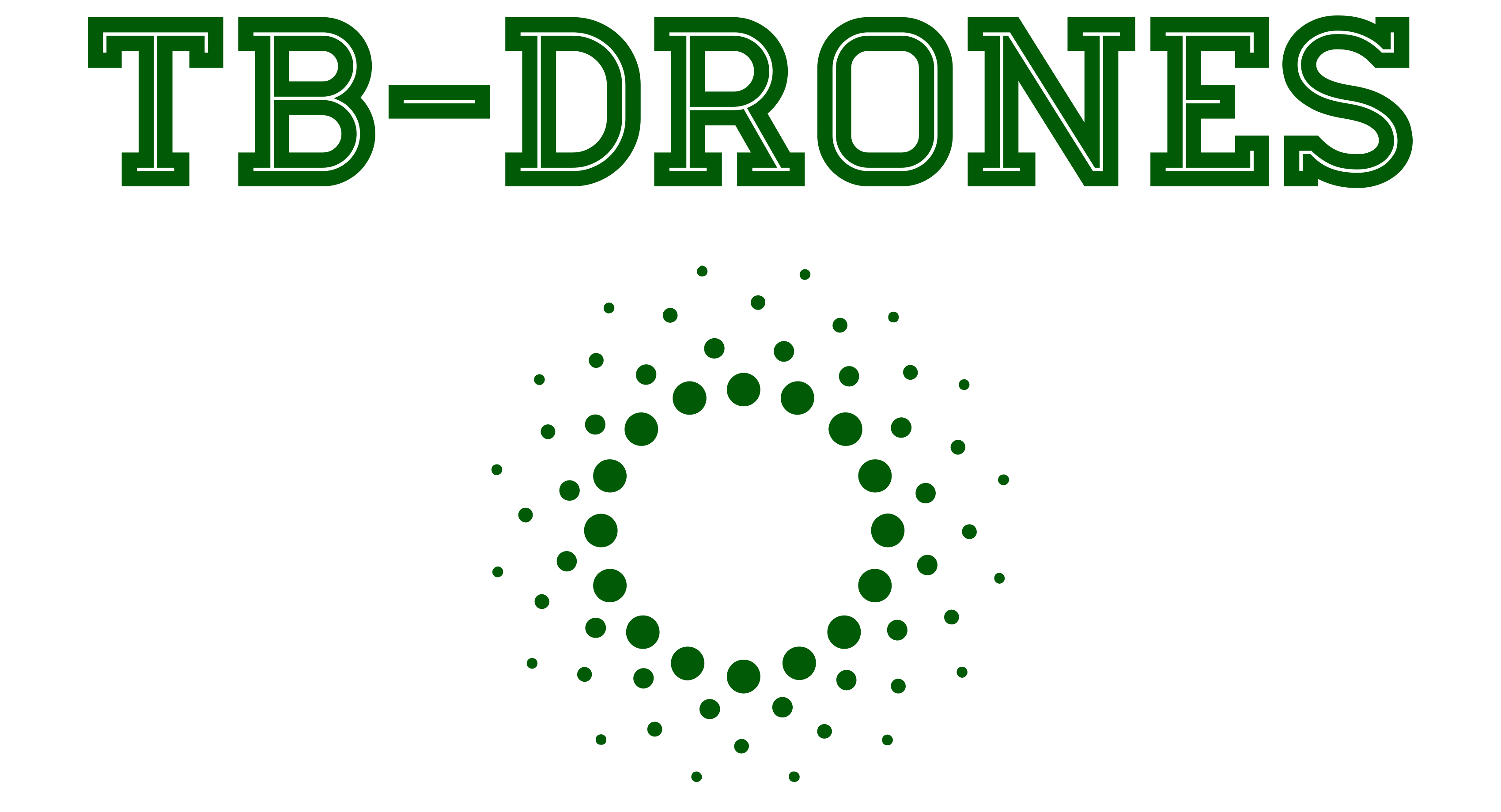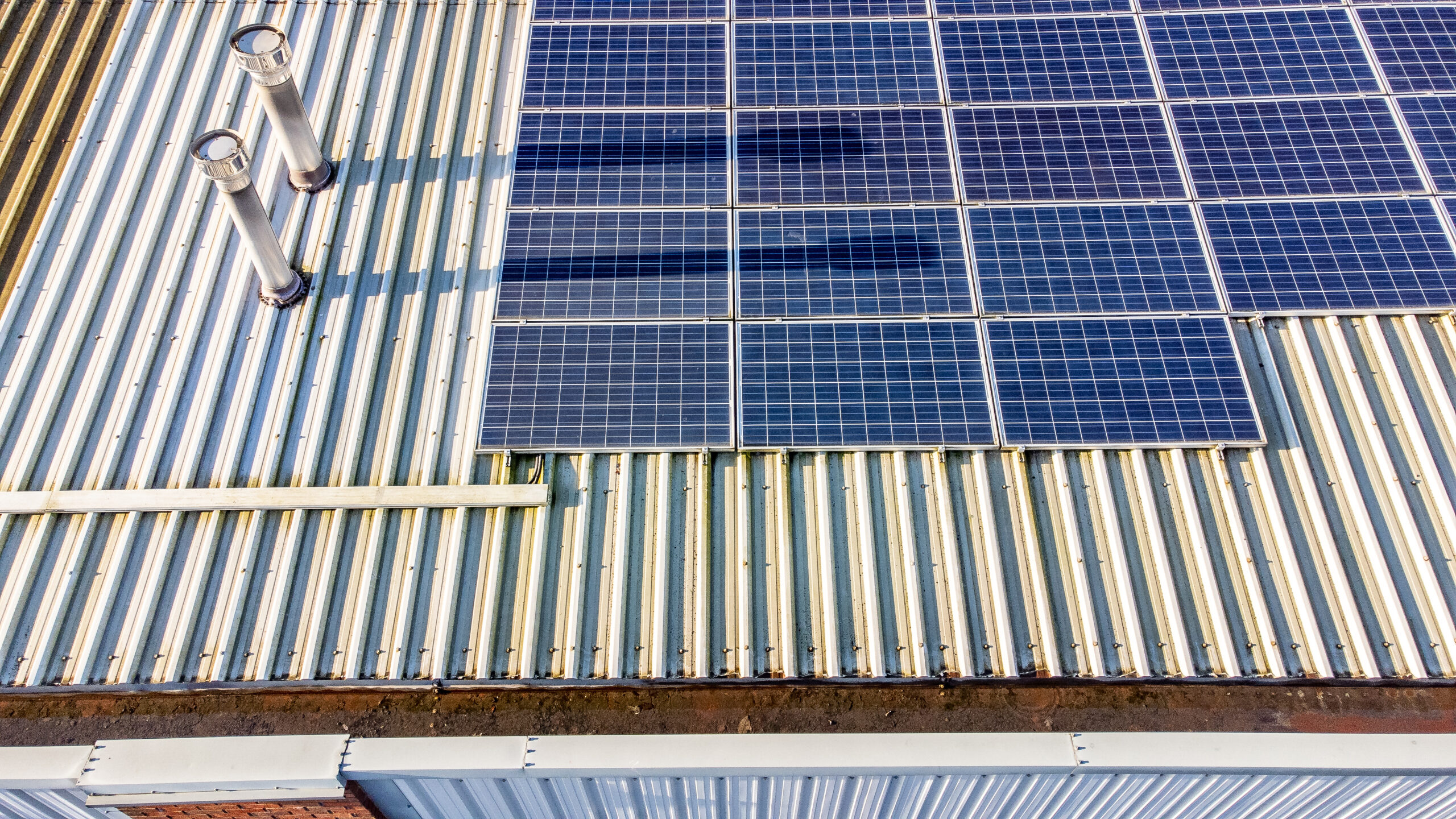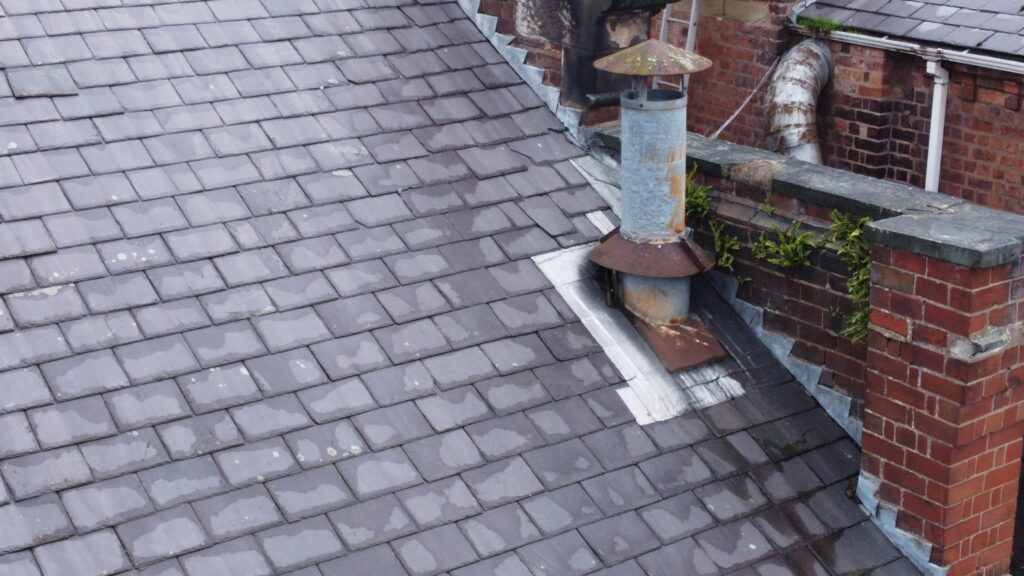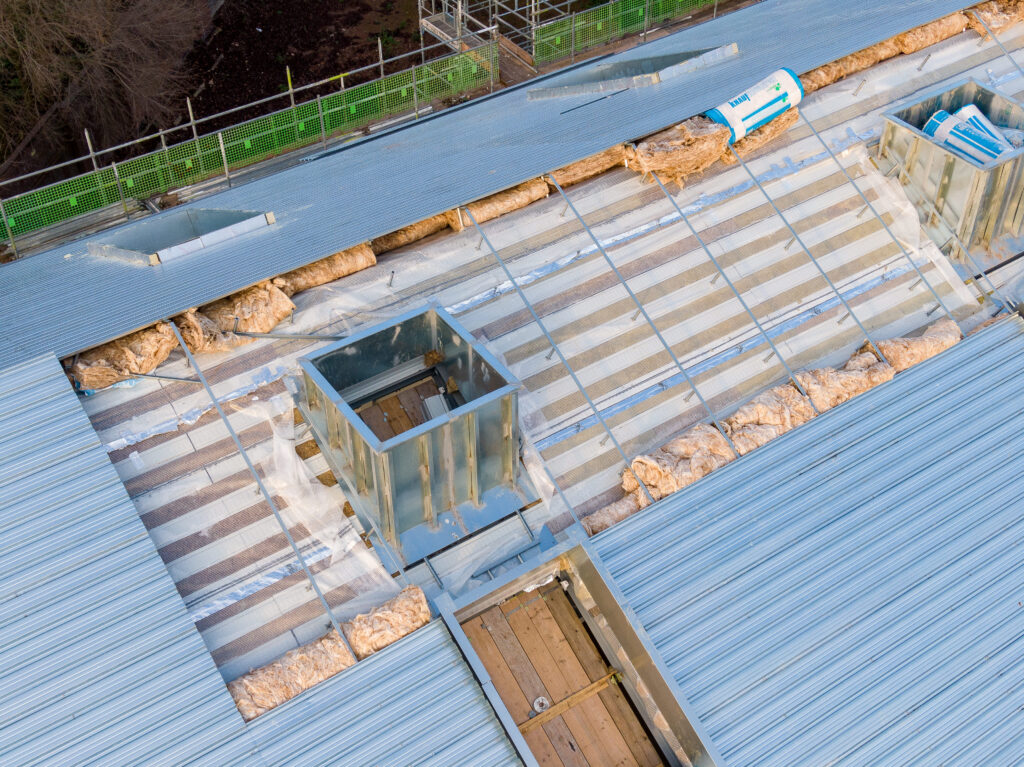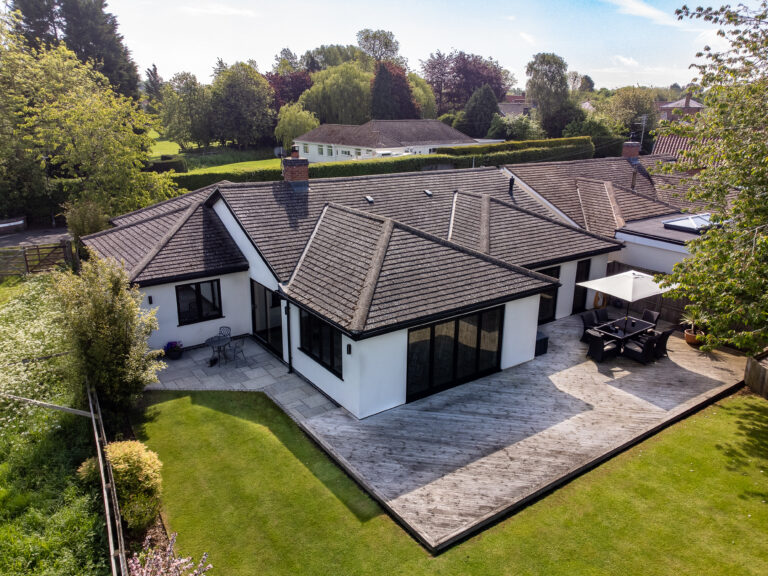Roof inspections are a crucial aspect of building maintenance and repair, ensuring the structural integrity and safety of a property. Traditionally, these inspections have been time-consuming, dangerous, and often inaccurate. The advent of drones has revolutionized the field of roof inspections, making them faster, safer, and more accurate.
Drones, also known as unmanned aerial vehicles (UAVs), are remote-controlled aircraft equipped with cameras and sensors that can capture high-resolution images and collect valuable data. This technology has brought numerous benefits to the process of roof inspections. A study conducted by the Royal Institution of Chartered Surveyors (RICS) highlighted the advantages of using drones in the field of building inspections.
The benefits of incorporating drones in roof inspections include:
- Increased Speed and Efficiency: Drones can quickly navigate around a building’s exterior, capturing images and data in a fraction of the time it would take a human inspector. This enhanced speed and efficiency enable faster identification of any issues or damage.
- Enhanced Safety Measures: Roof inspections often involve working at heights, exposing inspectors to potential hazards. By utilizing drones, inspectors can avoid the need for manual inspections, reducing the risk of accidents and injuries.
- Improved Accuracy and Detailed Inspections: Drones offer a high level of accuracy, capturing detailed imagery and data from various angles. This allows for a more comprehensive assessment of a roof’s condition, identifying even minor defects that may not be visible to the naked eye.
- Cost-Effectiveness: Incorporating drones in roof inspections can significantly reduce costs associated with traditional inspections. By eliminating the need for scaffolding or equipment rentals, as well as minimizing inspection time, drones provide a cost-effective solution for property owners and inspection companies.
In order to utilize drones effectively in roof inspections, various techniques and technologies are employed. These include:
- Aerial Photography and Videography: Drones equipped with high-resolution cameras can capture detailed images and video footage of a roof’s condition, allowing inspectors to analyze the data remotely.
- Thermal Imaging: Thermal cameras attached to drones can detect variations in surface temperature. This technology helps identify areas of heat loss, water leakage, or insulation issues.
- Data Collection and Analysis: Drones can collect and transmit data in real time, providing instant access to vital information. This data can be further analyzed using specialized software, enabling inspectors to make informed decisions and recommendations.
While drones have revolutionized roof inspections, there are still certain challenges and limitations to consider. Legal and regulatory restrictions, adverse weather conditions, and the requirement for technical skills and training are some of the factors that need to be addressed.
Looking towards the future, drones continue to show promise in the field of roof inspections. Advancements in technology may lead to new applications and expanded capabilities, further enhancing the accuracy, efficiency, and safety of roof inspections.
Benefits of Drones in Roof Inspections
Roof inspections have been revolutionized by the use of drones, offering a range of impressive benefits. With increased speed and efficiency, enhanced safety measures, improved accuracy, and cost-effectiveness, drones have changed the landscape of roof inspections. Discover how these aerial devices have transformed the way we assess roofs, providing quicker, safer, and more accurate results. From reducing risk to delivering detailed inspections, drones have become an invaluable tool in the roofing industry.
Increased Speed and Efficiency
Drones enhance roof inspections by increasing speed and efficiency. Here’s why:
1. Rapid aerial assessment: Drones provide a thorough overview of the entire roof, aiding inspectors in identifying potential issues without manual inspection.
2. Time-saving capabilities: Drones cover large areas much more quickly than traditional inspections. Inspectors can complete multiple inspections in a day, enhancing productivity.
3. Real-time data collection: Drones equipped with high-resolution cameras capture detailed images and videos of the roof. This eliminates the need for time-consuming manual documentation.
4. Improved accessibility: Drones can reach challenging-to-access areas, saving time and ensuring inspector safety.
5. Streamlined reporting: Drones generate comprehensive reports with precise measurements, annotations, and visual documentation. This accelerates the reporting process and guarantees accuracy.
Utilising drone technology enhances the speed and efficiency of roof inspections, enabling prompt repairs and maintenance for long-lasting and secure roofs.
Enhanced Safety Measures
Decreased risk of falls and injuries: Drones in roof inspections incorporate enhanced safety measures by eliminating the need for human inspectors to climb roofs, thus reducing the risk of falls and injuries.
Enhanced workplace safety: Drones enable inspectors to carry out roof inspections from a secure location, such as the ground or a nearby structure, incorporating enhanced safety measures and avoiding dangers on the roof.
Improved accident prevention: Drones equipped with high-resolution cameras and sensors can identify hazards on the roof, such as weak areas or structural damage, enhancing safety measures and allowing for prompt repairs and accident prevention.
Efficient detection of hazardous materials: Drones with thermal imaging capabilities can detect heat signatures, helping inspectors identify and avoid hazardous materials such as electrical issues or fire risks, and incorporating enhanced safety measures.
Reduced exposure to severe weather conditions: By using drones for inspections, human inspectors are protected from extreme weather conditions, ensuring their safety and well-being and incorporating enhanced safety measures.
Enhanced access to hard-to-reach areas: Drones can easily navigate through tight spaces or inaccessible parts of a roof, enabling inspectors to thoroughly examine every corner, including areas that would be difficult or dangerous for humans. This enhances safety measures during the inspection process.
Real-time monitoring and analysis: Drones provide live video feeds and data analysis, allowing inspectors to assess roof conditions in real time, reducing the risk of accidents during the inspection process and incorporating enhanced safety measures.
Improved Accuracy and Detailed Inspections
Improved accuracy and detailed inspections are key advantages that drones bring to roof inspections. Drones are equipped with high-resolution cameras and advanced imaging technology, enabling them to capture detailed images and videos of roofs. This ability facilitates the identification of even the smallest defects or damages that may be missed during traditional inspections. The aerial viewpoint provided by drones enhances the accuracy of assessing the entire roof.
Drones also offer the advantage of following precise flight paths, ensuring consistent coverage of the roof. This eliminates the risk of human error or oversight when inspecting hard-to-reach areas. Drones can capture close-up images of specific areas, allowing for a more thorough analysis of any potential issues that may exist.
Drones have the capability to utilize thermal imaging technology to detect temperature variations. This feature is particularly valuable in identifying concealed leaks or areas with poor insulation, as temperature differences can indicate underlying problems. By incorporating thermal imaging, drones further enhance the accuracy of identifying potential issues that may not be visible to the naked eye.
Cost-Effectiveness
Roof inspections greatly benefit from the cost-effectiveness of drones. Here are several reasons why:
1. Efficient Time Management: Drones efficiently cover large areas and complete inspections at a faster pace compared to traditional methods. This increased speed enables more inspections to be performed in a single day, resulting in heightened productivity and cost savings.
2. Reduced Labour Costs: The utilization of drone technology eliminates the need for manual labour on roofs, ultimately reducing expenses. With the use of drones, there is no longer a requirement for roofers or inspectors to physically ascend and descend, hence diminishing manpower costs.
3. Precision and Accuracy: Drones have the capability to capture high-resolution images and videos, enabling inspectors to identify even the most minute damages or issues. This level of precision prevents unnecessary expenses on repairs and maintenance, ensuring efficient allocation of resources.
4. Lower Insurance Premiums: By implementing drones for roof inspections, companies showcase a proactive approach to maintenance and risk management. This proactive stance may lead to reduced insurance premiums, consequently resulting in long-term cost savings.
Pro-tip: When assessing the cost-effectiveness of drone roof inspections, it is advisable to calculate the return on investment (ROI) by comparing upfront costs of drone equipment and training with potential savings in labour, time, and maintenance. This comprehensive analysis will accurately determine the true value and long-term benefits of incorporating drones into roof inspections.
How Drones are Used in Roof Inspections
Roof inspections have been revolutionized by drones, making the process faster, safer, and more accurate. Let’s take a closer look at how drones are used in this context. From capturing stunning aerial photography and videography to utilizing thermal imaging capabilities, drones offer unique perspectives and enhanced insights. The data collection and analysis enabled by drones bring efficiency and precision to the inspection process. Get ready to explore the exciting world of drone technology in roof inspections!
Aerial Photography and Videography
Aerial photography and videography play a crucial role in conducting roof inspections using drones. There are several key factors to consider when it comes to this process:
- Aerial perspective: Drones equipped with cameras effectively capture high-quality images and videos of roofs from various angles and heights. This vantage point provides valuable insights into the condition of the roof and any potential problems that may arise.
- Thorough inspections: The use of drones allows inspectors to closely examine hard-to-reach areas by utilizing the images and videos they capture. This enables them to identify cracks, leaks, and other forms of damage that may not be easily visible from the ground.
- Efficiency and speed: By utilizing drones for aerial photography and videography, the inspection process is significantly expedited. Inspectors are able to quickly survey the entire roof without the need for ladders or scaffolding, resulting in time and resource savings.
- Accurate documentation: The visual data obtained through drones serves as a comprehensive and unbiased record of the roof’s condition. This documentation is valuable for analysis, comparison, or future reference purposes.
- Enhanced safety: Aerial photography and videography eliminate the need for inspectors to physically climb onto roofs, thereby reducing the risk of accidents and injuries. This method also enables inspections to be carried out in challenging or hazardous environments.
Here’s an actual example: In London, a roofing company implemented the use of drones for inspections, resulting in completion times being cut in half compared to traditional methods. This increased efficiency significantly contributed to heightened customer satisfaction, as inspections were carried out with minimal disruption. The detailed images and videos obtained from the drones helped the company accurately identify and address any roof issues, ensuring prompt and effective repairs.
Thermal Imaging
Thermal imaging plays a crucial role in drone roof inspections. By detecting heat patterns and temperature variations on the roof’s surface, it can uncover potential issues that are not visible to the naked eye. Inspectors can utilize thermal imaging to locate areas of moisture intrusion, insulation gaps, and energy leaks. This advanced technology eliminates the need for time-consuming and expensive physical inspections.
In addition, thermal imaging enables the assessment of the overall condition of the roof. Inspectors can analyze the uniformity and efficiency of the roofing system by capturing temperature data across the surface. This valuable information evaluates the effectiveness of the insulation, identifies any possible weak areas, and determines whether repairs or maintenance are required.
The utilization of thermal imaging together with drones offers numerous benefits. It significantly increases the speed and efficiency of inspections, enables real-time data capture, and enhances safety by eliminating the need for physical access to hazardous areas. It provides a more precise and detailed assessment of the roof’s condition, allowing for targeted repairs and maintenance.
To fully optimize the use of thermal imaging in drone roof inspections, it is important to have proper training and expertise in interpreting the captured data. Inspectors need to be knowledgeable in identifying different heat signatures and understanding the implications they may hold. Regular calibration and maintenance of the thermal imaging equipment are essential to ensure accurate results.
Data Collection and Analysis
Data collection and analysis play a crucial role in the effective utilization of drones in roof inspections. Equipped with cameras and sensors, drones gather valuable data about the roof’s condition for thorough analysis. Here are the key aspects to consider when it comes to collecting and analyzing data in drone roof inspections:
- Detailed imagery: Drones capture high-resolution photographs and videos, enabling a comprehensive examination of the roof’s surface and the identification of any potential issues.
- Thermal imaging: With the use of thermal cameras, drones can detect temperature differences, thereby identifying problems related to insulation and water leaks.
- Measurement and mapping: Drones generate precise measurements and 3D models of roofs, facilitating the calculation of dimensions, identification of structural issues, and the creation of accurate roof plans.
- Data analysis software: Sophisticated software analyzes the collected data, pinpointing any anomalies and offering insights into the roof’s overall condition. This analysis aids in prioritizing repairs, planning maintenance activities, and estimating the roof’s overall health.
During a recent roof inspection of a large commercial building, a drone collected data and analyzed the roof’s condition. The aerial photographs and thermal imaging revealed insulation problems that were causing energy inefficiency. By analyzing this data, the building owner was able to prioritize repairs and improve the insulation, resulting in significant cost reductions in energy bills. These efforts contributed to enhanced sustainability initiatives, saving the owner thousands of pounds.
Challenges and Limitations of Drone Roof Inspections
Roof inspections have advanced significantly with the usage of drones, revolutionizing their speed, safety, and accuracy. Like any technology, challenges and limitations accompany this innovation. In this section, we will explore the various obstacles that drone roof inspections encounter. From navigating legal and regulatory restrictions to braving unpredictable weather conditions, and even the necessity for technical skills and training, we’ll uncover the hurdles that come hand-in-hand with leveraging drones for roof inspections. Get ready to discover the factors that shape the future of this cutting-edge technology.
Legal and Regulatory Restrictions
Legal and regulatory restrictions are of paramount importance when utilizing drones for roof inspections. It is crucial that operators possess the necessary licenses and certifications. Drones are subject to flight restrictions, which include avoiding sensitive areas like airports or densely populated regions. It is mandatory to comply with the maximum altitude and distance limits set by regulatory authorities. During inspections, drone operators must also demonstrate adherence to privacy laws and regulations to safeguard individuals’ privacy. Obtaining specific insurance coverage may be necessary to fulfil legal obligations.
These restrictions are implemented to ensure the safe and responsible use of drones in roof inspections, with a particular emphasis on preserving privacy and safety. Compliance with these restrictions is essential to avoid legal consequences and uphold public trust in the drone industry.
Weather Conditions
Weather conditions play a crucial role in drone roof inspections. The stability and manoeuvrability of drones can be greatly affected by strong winds, which makes it challenging to capture accurate data. Heavy rain or snow can impair visibility and compromise the quality of thermal imaging and aerial photography. Extreme heat or cold can also impact the battery life and performance of drones, limiting the duration of inspections. Foggy or misty conditions further obstruct visibility, making it difficult to identify any damages or issues.
It’s important to note that lightning or thunderstorms pose a safety risk during inspections, increasing the likelihood of accidents or damages. Optimal inspection planning and choosing suitable weather windows are reliant on accurate weather forecasts. In some cases, weather conditions may require rescheduling inspections to ensure safety and reliable data collection. Regular weather monitoring during inspections is essential for making real-time adjustments and avoiding unforeseen incidents.
Considering and monitoring weather conditions is vital for the successful and safe execution of drone roof inspections.
Technical Skills and Training
To carry out successful drone roof inspections, possessing Technical Skills and Training is of utmost importance. Here are some vital considerations:
- Having a comprehensive understanding of drone technology: Operators must acquire a deep knowledge of the features, controls, and capabilities of the drone.
- Learning and mastering the specific techniques used for inspecting roofs with drones, including image capture, thermal imaging, and data analysis, is essential.
- Proficiency in flight management, which includes takeoff, landing, manoeuvring, and handling various weather conditions, is necessary for piloting a drone.
- Accurate data interpretation is crucial, as it requires technical skills to analyze the data captured by the drone and identify any potential issues or damage on the roof.
- To ensure a safe working environment for themselves and others, operators must comply with safety protocols by receiving training in safety procedures and regulations.
Pro-tip: Continuous practice, staying updated with industry advancements, and participating in workshops or training programs are effective ways to improve technical skills and stay ahead in the field of drone roof inspections.
Future Trends and Potential Applications of Drones in Roof Inspections
Drones have a promising future in roof inspections, with potential applications that can revolutionize the industry.
Firstly, drones can increase efficiency by reducing inspection time. Instead of manually inspecting every inch of a roof, drones equipped with high-resolution cameras can capture detailed images in a shorter period. This saves time and resources for roofing professionals.
Secondly, drones make roof inspections safer. By eliminating the need for inspectors to physically climb onto roofs, the risks associated with falls and injuries are minimized. Inspections can be conducted remotely, reducing accidents and enabling inspectors to analyze the data captured by drones.
Furthermore, drones provide more precise results. With advanced imaging technology, drones can detect even the slightest signs of damage or deterioration that may go unnoticed by human eyes. This enhances inspection accuracy and allows for early detection of issues, preventing costly repairs in the future.
In 2015, drones were first used in roof inspections, demonstrating their effectiveness in capturing precise aerial data and improving inspections for homeowners. Since then, the adoption of drones in the industry has grown, with roofing companies investing in drone technology to streamline their operations. This advancement has transformed roof inspections, making them faster, safer, and more accurate, revolutionizing the way roofs are assessed and maintained.
Tony Bryan is a professional aerial photographer and drone operator based in the Midlands of the UK. With a passion for capturing stunning aerial footage, Tony founded TB Drones, a company that specializes in drone photography and videography services for a variety of industries, including real estate, construction, and events. With years of experience in the field, Tony has become an expert in using drones to capture breathtaking aerial footage that provides a unique perspective on the world around us. Whether he’s working on a commercial project or capturing stunning landscape photography, Tony is committed to providing his clients with exceptional service and beautiful results.
